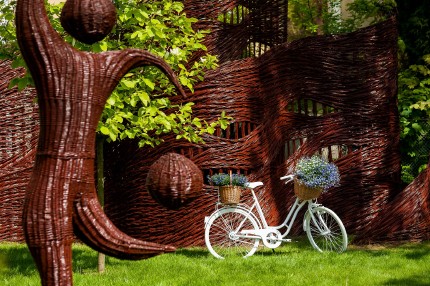BASKETRY AND WICKERWORK

PHOTO: ARCHIVE OF THE CULTURE CITY CENTER IN RUDNIK ON THE SAN RIVER
In Rudnik on the San the development of wickerwork began and became more and more significant at the end of the 19th century. The development of basketry was initiated by the owner of the Rudnik estates, Count Ferdynand Hompesch. It was on his initiative and thanks to his efforts that several residents of Rudnik and Kopek were sent to the basketry school in Vienna. In 1878, a basketry school was established in the town, where cottage workers were educated under the watchful eye of basketry masters and instructors. The entire production system was based on a cottage industry, obtaining the raw material (wicker cultivation was introduced), as well as the sale of finished products.
It contributed to the increase in the number of inhabitants and an increase in their wealth. From 1919, there were 12 companies that exported products, and 20 companies that traded in the domestic market, operating in the town. There were 3 thousand cottage workshops and around 15 thousand people working for them in Rudnik on the San. During the German occupation, Rudnik basketry was included in the so-called war industry and used for the mass production of containers for war purposes. Because the occupier’s management of the wicker plantations was based on plundering, it led to crop damage, and this in turn made it impossible to restart Rudnik basketry well immediately after the war. In the post-war years, several cooperative organizations were founded in Rudnik on the San. At the time, about 3,500 cottage workers and over 800 permanent employees were employed in wicker weaving. Currently, the most important small-scale production and trade in the region is the manufacture and sale of wickerwork, for which Rudnik on the San is famous in the country and around the world. This is confirmed by the EXPO 2005 exhibition in Japan. As the wickerwork craft continued to develop, there was a need to properly display the history, traditions and culture of the wickerwork region, as well as related items. For this purpose, the Wicker Centre was established in Rudnik on the San, which is aimed at comprehensively protecting the cultural heritage of our region, and at promoting wicker products as local goods of the Rudnik wickerwork basin.
